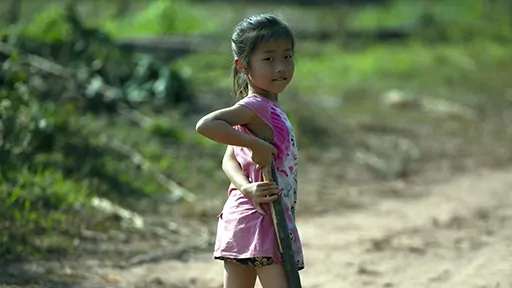Opinion Editorial Archive December, 2020: Indigenous Girl of the Year

When was the last time you heard any news about the Lao People's Democratic Republic (more commonly called Laos)? I suspect that, unless you actively monitor world news, it's been a long time. Nonetheless, a few things did happen there last month. A new species of snail was discovered; the country became a full member of World Rugby; it prepared for the opening of its first expressway; and it welcomed the news that it will soon get its first Starbucks coffee shop!
Besides little news coming out of Laos, it also seems that little news gets in. If you visit, you will see Hammer and Sickle flags flying just about everywhere you go. They are not relics. Despite that emblem representing communism generally, here it represents the Union of Soviet Socialist Republics equally. Despite the USSR breaking up as a political entity thirty years ago, these flags are no more than a few years old. It's almost as if nobody in Laos has been told this news yet!
In a report last month, the African Child Policy Forum ranked Chad, Eritrea and South Sudan as the worst places in Africa to be a girl. I don't know of any comparable report for Asia, but I suspect that Laos must be one the worst places on that continent to be an indigenous girl. After all, Laos is given Least Developed Country status by the UN. Gender inequality there is very high.
My "Indigenous Girl of the Year" recipient for 2020 is from Laos. She is an indigenous Tai Deng girl whom I photographed in February. I'd arrived in her tiny village in the north of the country on a hot, dry Sunday afternoon. Needing water and rest, I found shade in a courtyard surrounded by a few houses, where I sat awhile on a wall. Although I didn't know it yet, inside one of those houses were a few young girls. Soon, the door of that house opened and a girl of, perhaps, nine stepped out. She saw me and immediately went giggling back inside. Villages like hers see few outside visitors; adults, but especially children, are often shy at first. Eventually there was a steady stream of curious girls around the same age peeking out of the door for a few seconds at a time. This activity soon progressed to a game of "dare" in which they challenged each other to appear for just short enough that I was unable to get a photo of them. I got the impression that these girls hadn't had so much fun in months. I played along — eventually managing to capture a few photos.
Instead of appearing at the door to play the game, this girl casually walked out of the house ignoring me. She was not significantly older than the other girls, but the look on her face ironically suggested that she considered herself too grown-up to play games. She was carrying a wooden shovel, so I knew she had some kind of work to do. I watched her walk away and I was about to put my camera down when she suddenly turned around and looked back at me. Then a brief smile flashed across her face. At first, I thought she was playing her own "dare" game with me. I no longer believe that. Instead, I now believe she wanted to be photographed. Laos is hoping to be lifted out of its Least Developed Country status through foreign investment. If it ever becomes a prosperous country for indigenous girls, it will be because of the individuality of girls like this one.
If you enjoyed reading this month's opinion editorial, please consider supporting independent, advertising-free journalism by buying us a coffee to help us cover the cost of hosting our web site. Please click on the link or scan the QR code. Thanks!

